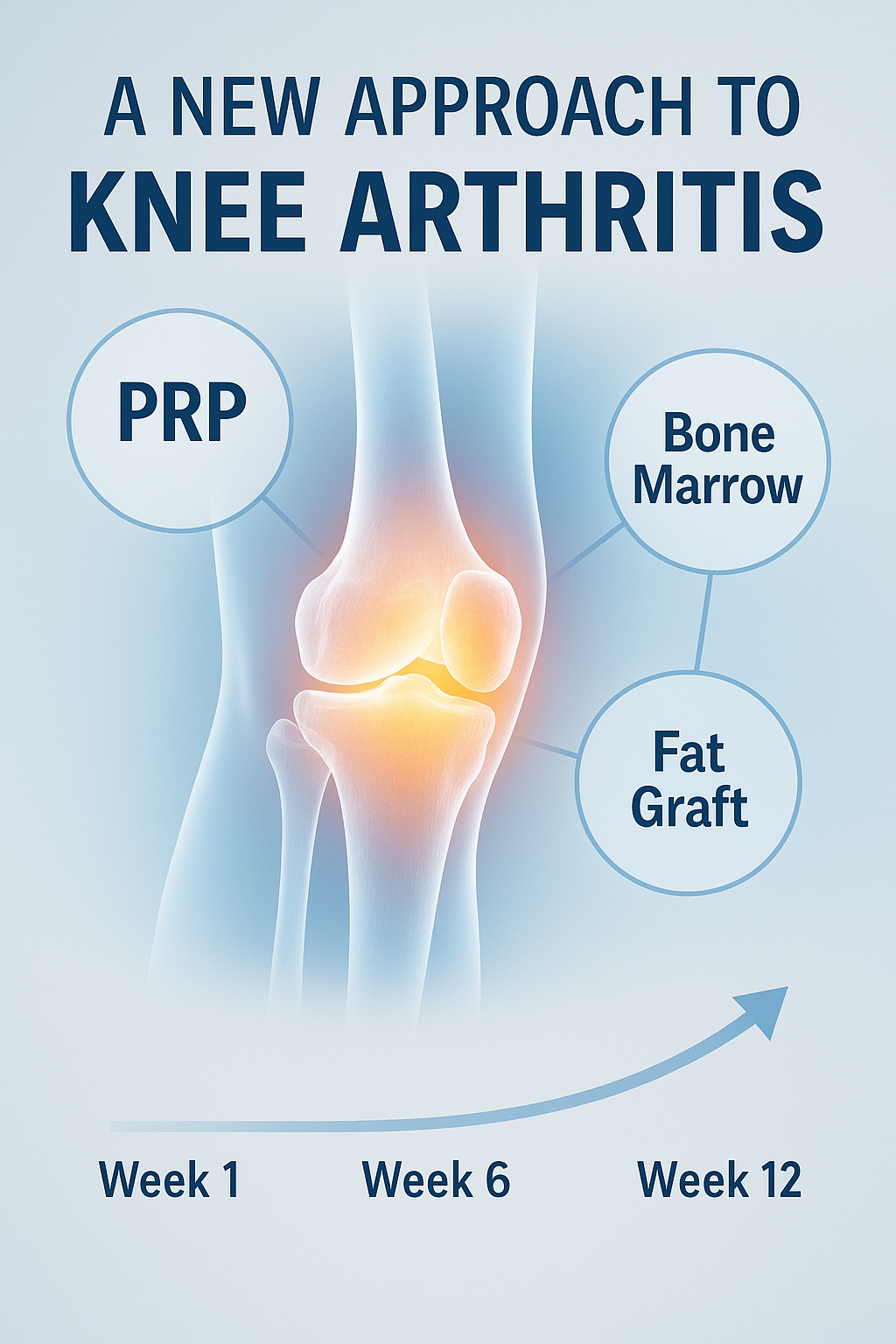
02 Oct Study on the Safety and Efficacy of Combined Bone Marrow, Fat, and PRP Injections for Severe Knee Osteoarthritis
Severe knee arthritis is one of the toughest conditions to manage. Pain pills, injections, and physical therapy often fail to provide lasting relief. Surgery, while effective, isn’t always possible, or welcome. That leaves many patients in limbo, waiting and hurting.
A recent clinical study explored an approach that doesn’t come from a pharmacy shelf but from the patient’s own body. The treatment combined three minimally processed orthobiologics: platelet-rich plasma (PRP), bone marrow aspirate (BMA), and a small fat graft.
The design of the trial
A group of 31 adults with advanced knee arthritis (average age: 67) was enrolled. All had significant pain and limited function, and none had responded well to conservative care. Researchers combined three approaches:
- Bone marrow aspirate (BMA): a small amount of bone marrow fluid, rich in cells and bioactive molecules.
- Fat graft (lipoaspirate): minimally processed adipose tissue, another source of healing factors.
- Platelet-rich plasma (PRP): concentrated platelets from the patient’s own blood.
Each patient received the fat graft and bone marrow aspirate first, followed by a series of three PRP injections over about three months.
What do the results show?
Thirty-one adults with severe knee arthritis took part. Their average age was 67, and every one of them had tried and failed standard care. After receiving the bone marrow and fat graft, they came back for three rounds of PRP spaced across several weeks.
The changes didn’t burst onto the scene immediately. At the first follow-up, patients reported modest relief, less pain, and easier movement. By the second follow-up, about three months in, those improvements grew stronger. Pain scores dropped, function improved, and people said they felt a genuine shift in their daily lives.
Numbers backed up their words. The gains were statistically significant, and importantly, they crossed the threshold into what doctors call “clinically meaningful.” In other words, the difference wasn’t just on paper, it mattered in practice.
Putting it into perspective
While the study was small and lacked a control group, the findings are still significant. Many patients with severe arthritis struggle to find anything short of surgery that truly helps. The combination of PRP, bone marrow aspirate, and fat grafting offered measurable relief without major safety concerns.
Importantly, the biggest improvements showed up only after the full three-injection series, highlighting that commitment to the protocol may matter as much as the treatment itself.
Conclusion
This research adds to a growing body of evidence that orthobiologics can be more than hype.
For patients with knee osteoarthritis who feel stuck between failed conservative care and the leap to surgery, these regenerative strategies may offer a promising, safer middle ground.
Reference:
Roman SJ, et al. The Effect of Combined Bone Marrow Aspirate, Lipoaspirate, and Platelet-Rich Plasma Injections on Pain, Function, and Perceived Change Amongst Individuals with Severe Knee Osteoarthritis. Bio Ortho J. 2024;6(SP1):1–6.
